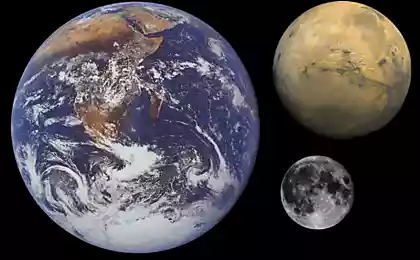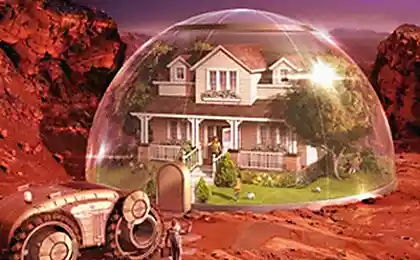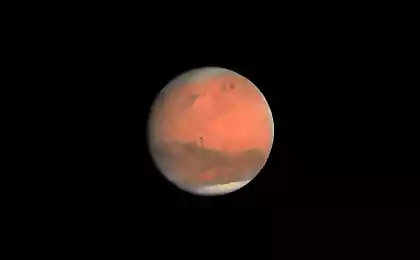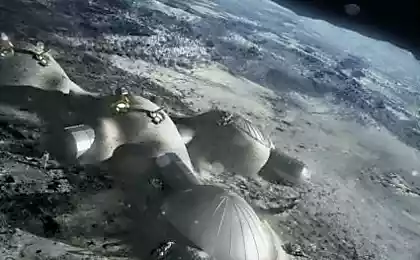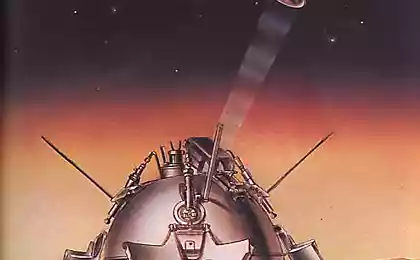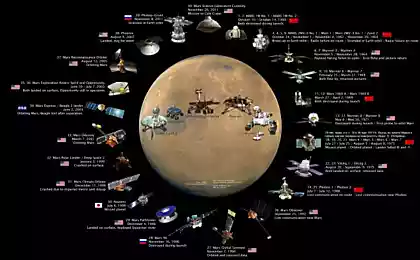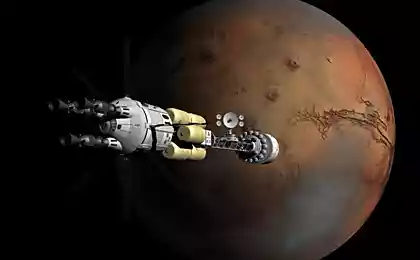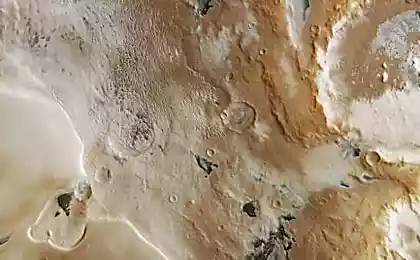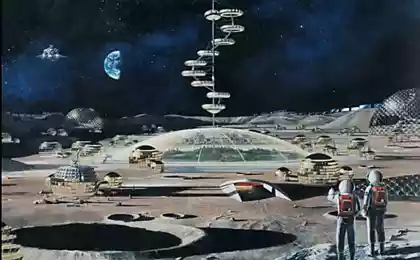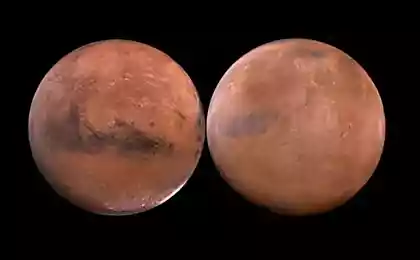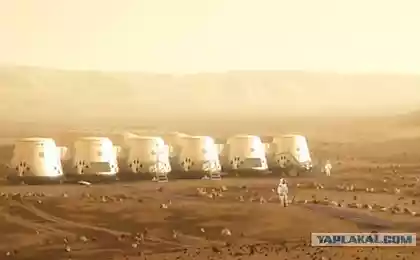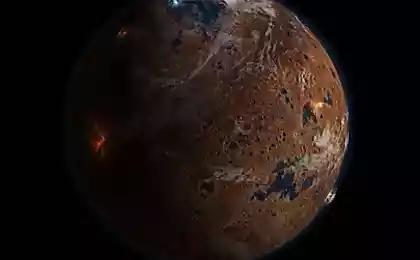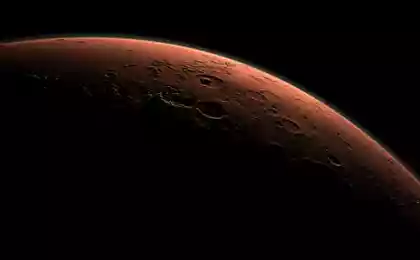1356
Beautiful views of Mars
Outstanding digital photo processing techniques Dutchman Kees Venebosa been demonstrated in National Geographic and on the site of NASA. Processing of images he produced using landscape modeling Terragen. He has worked with various versions of this program since 1999. Most of the images were obtained by digital simulation images on NASA heights from different satellites, such as the Mars Global Surveyor. He did a lot of photos for National Geographic, not only Mars, but the good old Earth and other planets of the solar system and extrasolar planets other systems. We have assembled a collection of his most beautiful and fantastic photos of Mars.
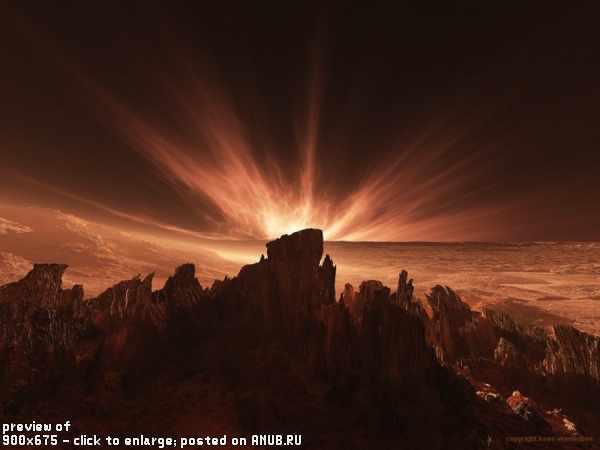
1. The southern end of the crater Holden. Rockies close sun that breaks through the clouds, forming a star shape.
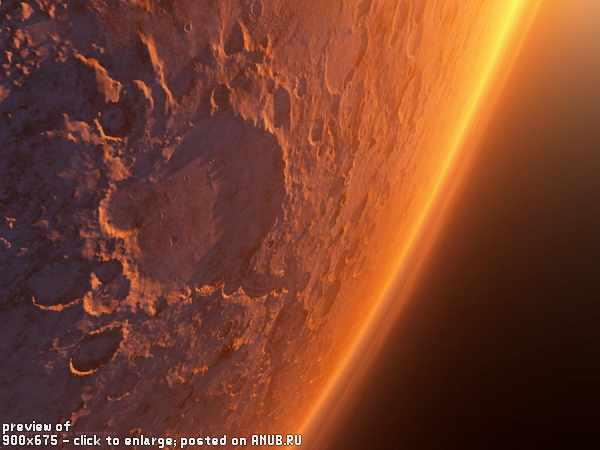
2. Gusev Crater in ancient times. The place where the rover landed AGV-Spirit MER2003. Recently there was a sandstorm.
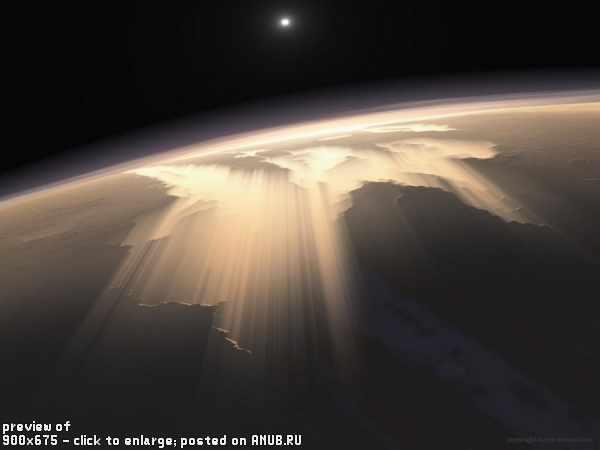
3. Valles Marineris. Valles Marineris after the dust storm, views of the valley from the canyon Koprat (foreground) .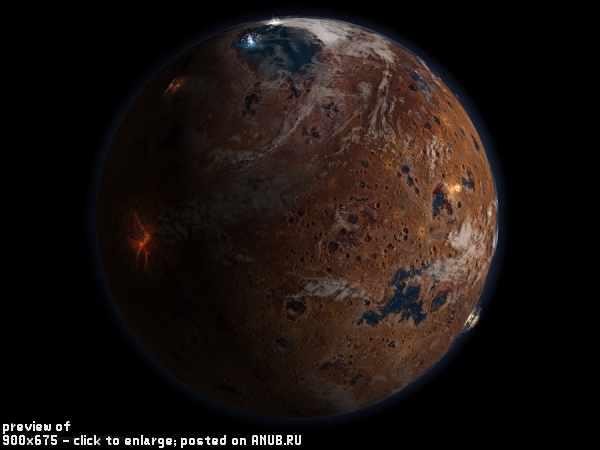
4. Noachianskaya epoch on Mars. It looked like Mars about 4 billion years ago. North Rift is filled with water, a large lake at the bottom - it's meridians. The rover Opportunity has found the presence of the inland sea. Photo is made for the July issue National Geo. 2005.
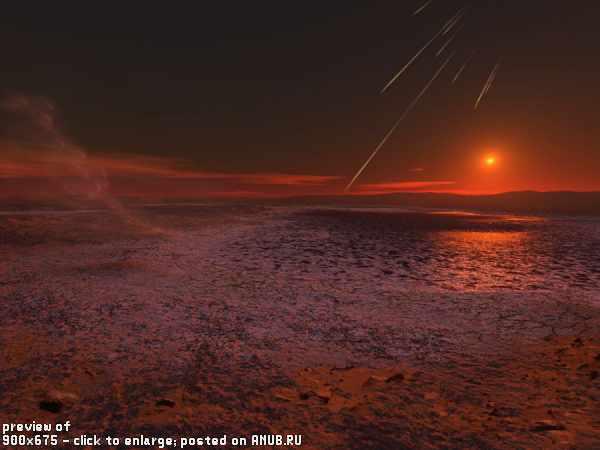
5. Plain argyria. Conceptual image for National Geographic: Mars at a time when he was losing water several billion years ago. Salt deposits, cracks in the mud, the formation of hematite, dust storms, and falling meteors.
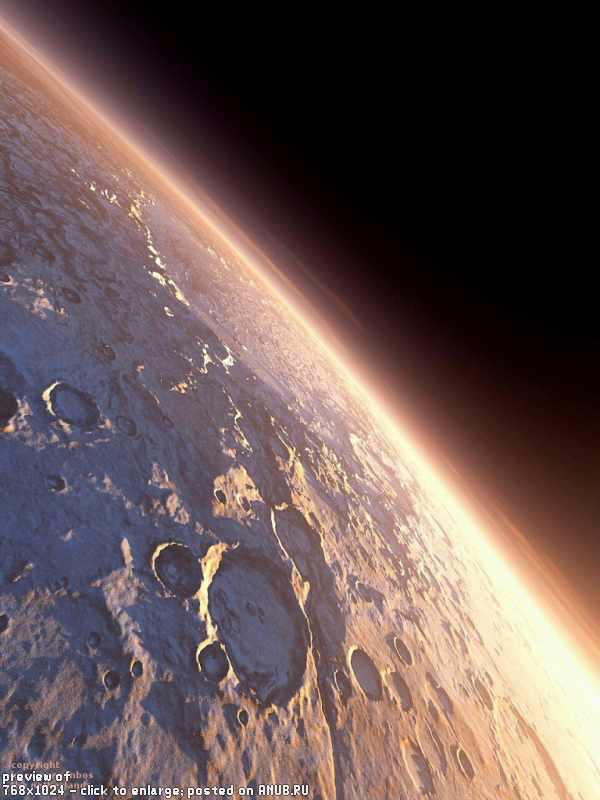
6. Crater Maraldi on icy Mars. Made for the cover of the January issue of National Geographic magazine in 2004.
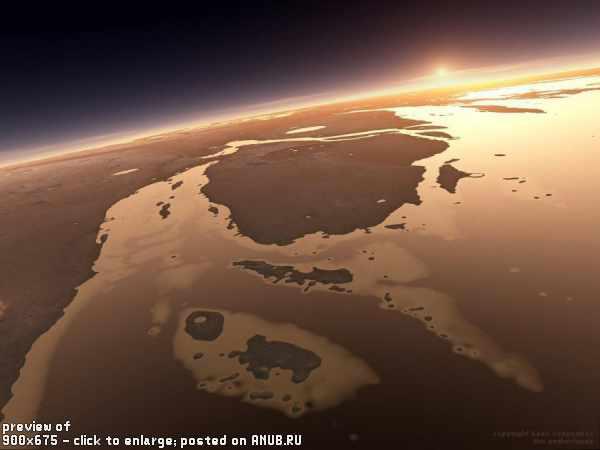
7. The southern part of Chryse Planitia. Ancient form of the southern area of the valley Rhys surrounded by valleys of Ares and Mariner.
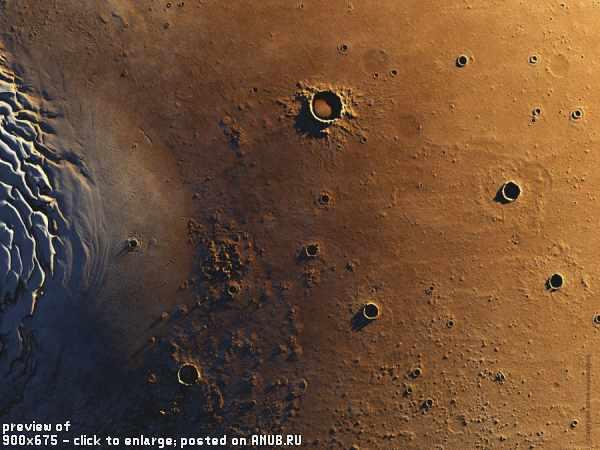
8. The Martian North Pole and North Pole razlom.Severny (left) and North Rift. A large crater at the top - this crater Queen, whose diameter is 85 km.
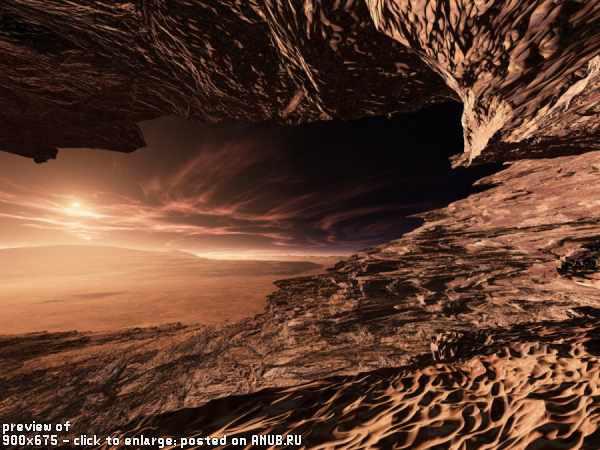
9. Cave, located on the northern slope of a Martian crater Gale. View of the cave on the northern slope of the crater Gale. Gale Crater cone - left.
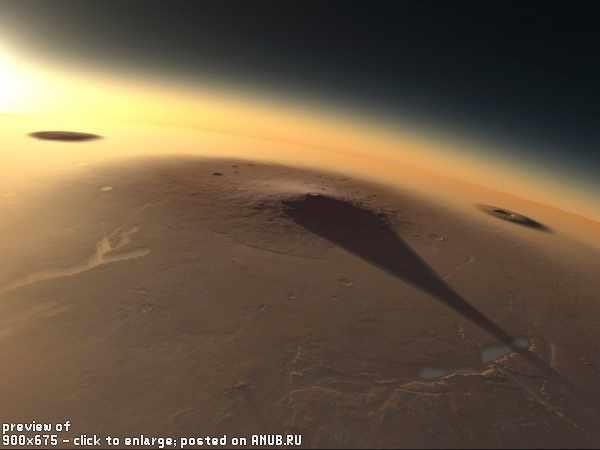
10. Sunrise on Mount Elysium. Image performed for an exhibition in Madrid Planetarium, which was dedicated to Mars. Left - Volcano Dome Hecate, right - Albor Tholus.
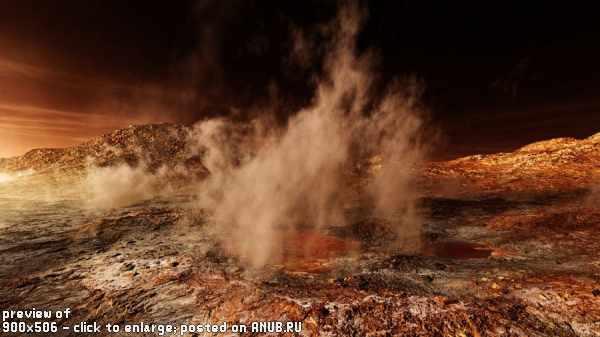
11. The landing place AGV-rover Spirit. Fragment of Gusev Crater (in the background - Mountain Hasbend Hill). Ancient Mars, fumaroles, sediment from hot water.
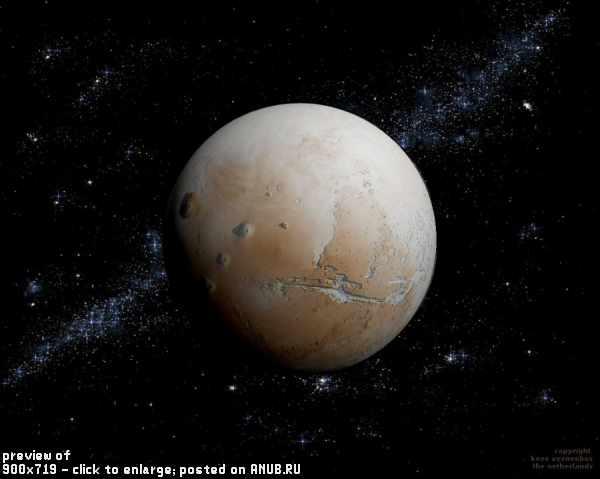
12. It looked like Mars during the Ice Age.

13. Sunrise on Mount Olympus. Sunrise in the morning mist on the Tharsis plateau. Olympus volcano seen from Lycus Sulci.
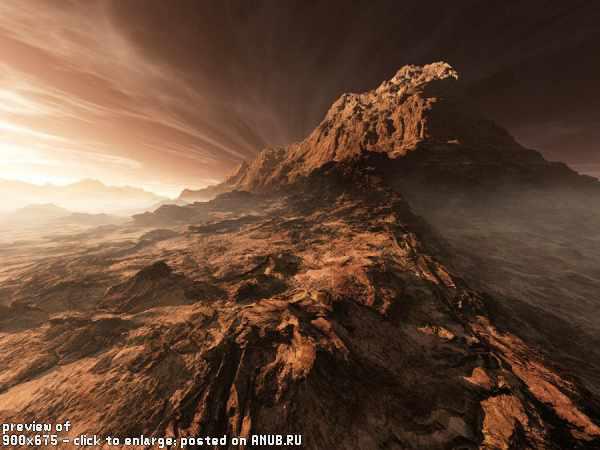
14. Mariner Valley. Foggy morning on the slopes of one of the eroded mountains Mariner Valley.
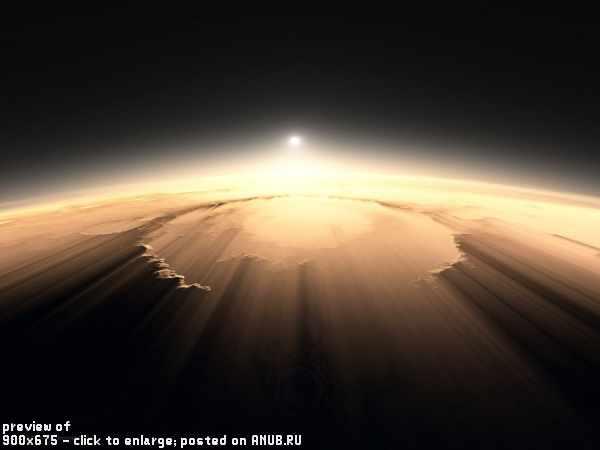
15. Schiaparelli Crater. Light low standing sun does not reach the western edge. The diameter of the crater Schiaparelli is 450 km (280 miles).
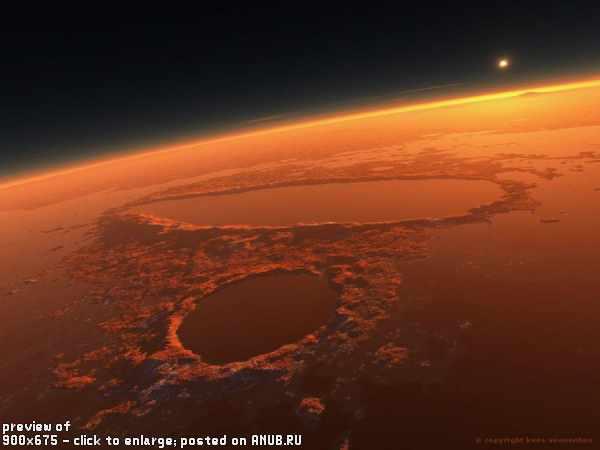
16. Crater Orcus Patera at sunset. Orcus Patera Crater unusual oval shape was formed because of the meteorite, which is slightly touched Mars.
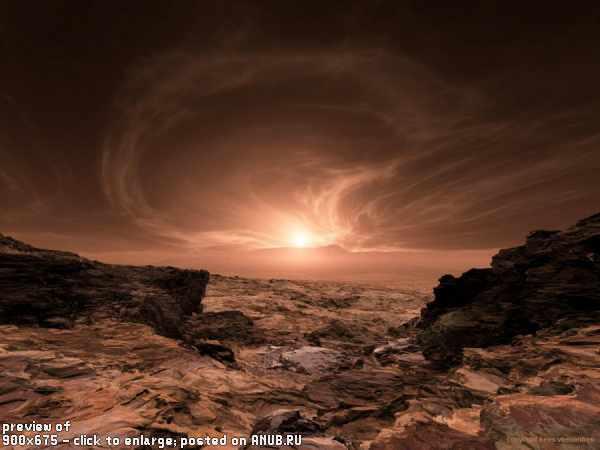
17. The southern edge of the crater Gale. Strange cloud above a ravine that leads to the crater Gale. Cone crater can be seen just below the sun. View of the north-east.
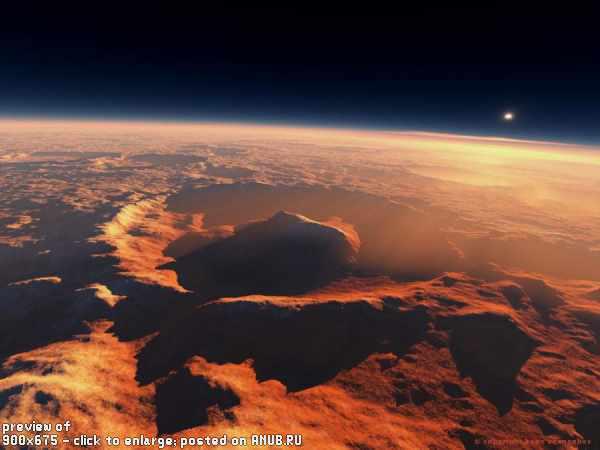
18. Crater Geyla.Zakat over the area Cimmeria. View of the crater with Gale Aeolian plateau.
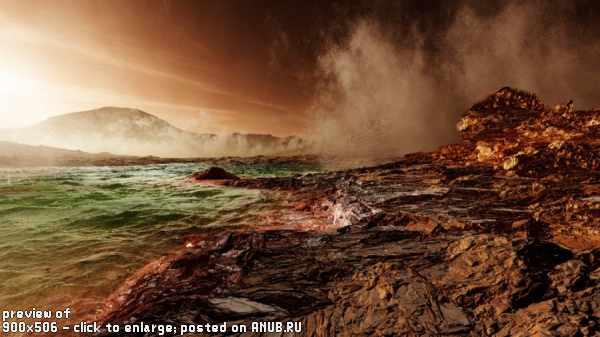
19. The landing place AGV-rover Spirit. It looked like Gusev noachianskuyu era. Another conceptual work, where there is more water and fumaroles.
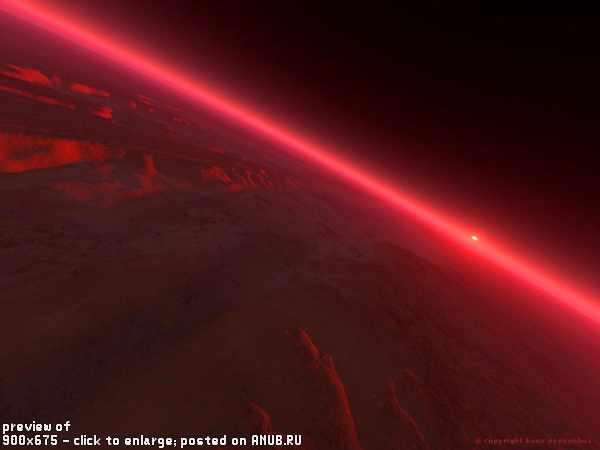
20. Rift Melas at dawn. Mars rover landing place №2.
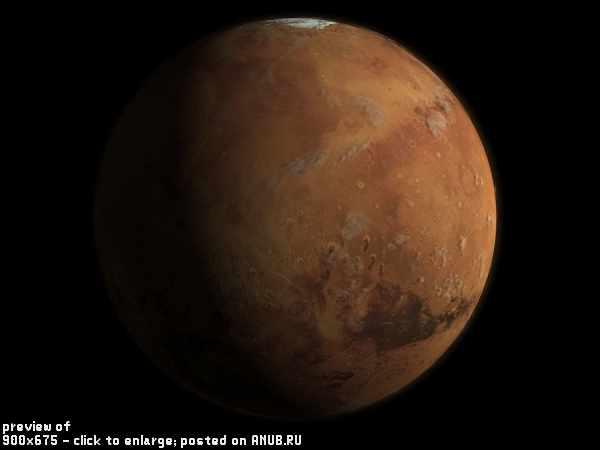
21. Mars segodnya.Eto image is printed with the image noachianskoy era (bottom) in the July issue of National Geographic Magazine for 2005.
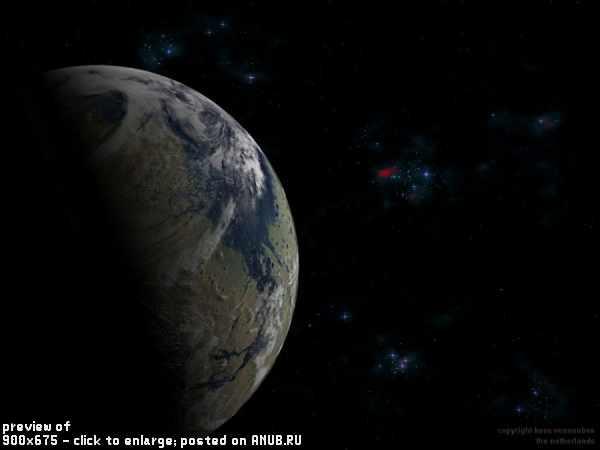
22. Mars, if it was the Earth - Valley Kase. The valley and the valley Chris Kase. Below - a passage in the Valles Marineris. Against the background of stars and nebulae.
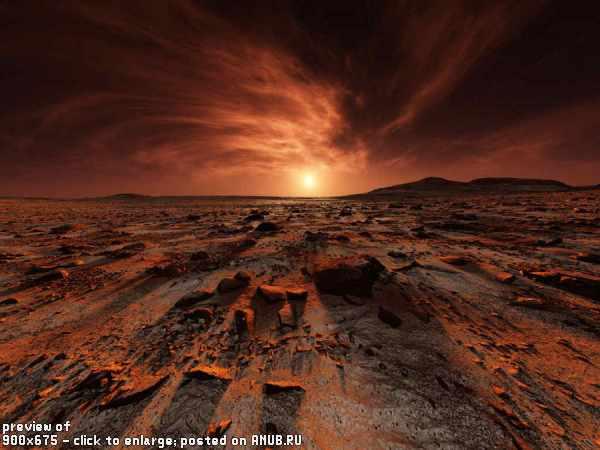
23. Place of landing Phoenix. Right - the edge of the crater Heimdall.
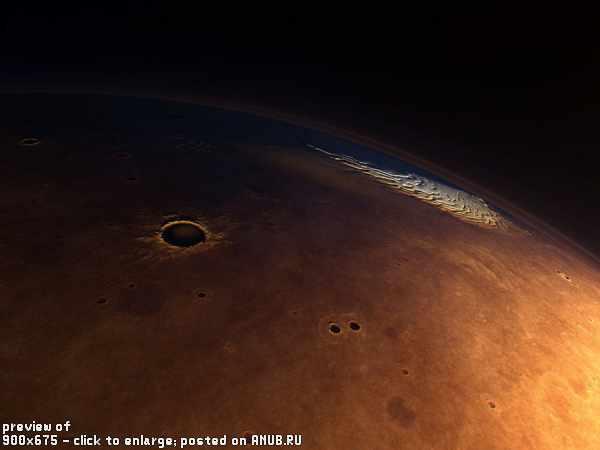
24. The North Pole and the North Rift. On the left is one of the largest craters, crater Queen (about 85 km in diameter).
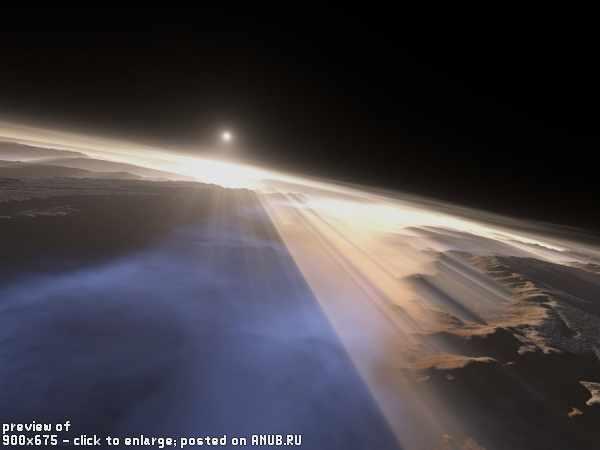
25. Rift Ius Chasma (Valles Marineris). Ius Chasma (western part of the Mariner Valley) with dust and mist.
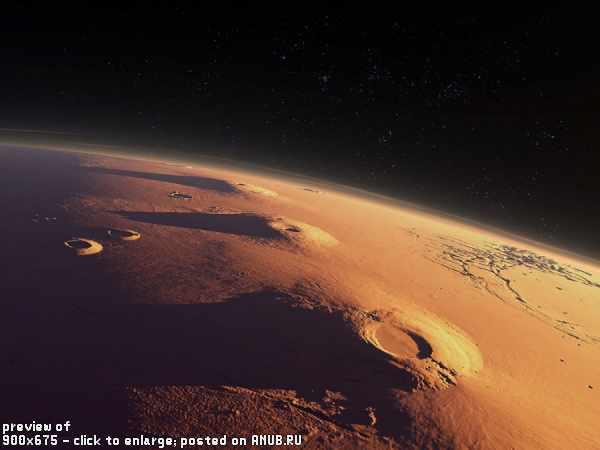
26. Mountains of Tharsis. Mountains Arsiya, Peacock and Askriyskaya. View from the southwest to the northeast. Left - Biblis crater (left) and Ulysses crater.
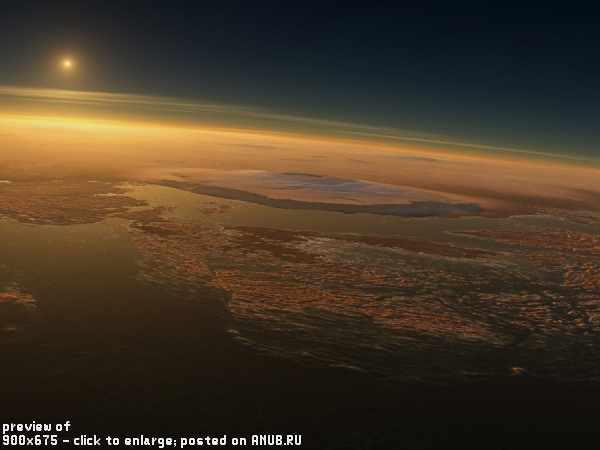
27. Mount Olympus in ancient times. So could look like Mount Olympus, about 4 billion years ago. There are water and denser atmosphere. Photo is made for an exhibition in Madrid Planetarium.
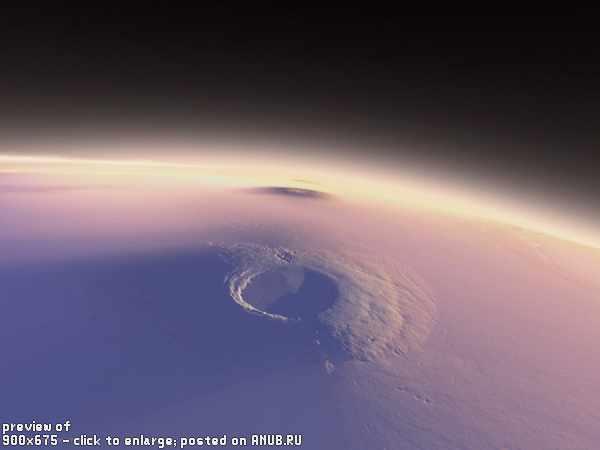
28. Arsia Mons. Arsia Mons reaches a height of 20 km, its diameter is 450 km diameter caldera more than 120 km.
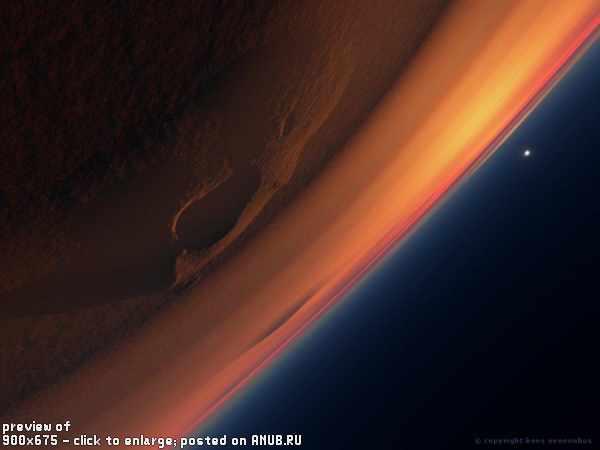
29. The dome of Tharsis. Tharsis dome during a sandstorm photographed "upside down". Tharsis volcanoes dominate the area sandstorm.

1. The southern end of the crater Holden. Rockies close sun that breaks through the clouds, forming a star shape.

2. Gusev Crater in ancient times. The place where the rover landed AGV-Spirit MER2003. Recently there was a sandstorm.

3. Valles Marineris. Valles Marineris after the dust storm, views of the valley from the canyon Koprat (foreground) .

4. Noachianskaya epoch on Mars. It looked like Mars about 4 billion years ago. North Rift is filled with water, a large lake at the bottom - it's meridians. The rover Opportunity has found the presence of the inland sea. Photo is made for the July issue National Geo. 2005.

5. Plain argyria. Conceptual image for National Geographic: Mars at a time when he was losing water several billion years ago. Salt deposits, cracks in the mud, the formation of hematite, dust storms, and falling meteors.

6. Crater Maraldi on icy Mars. Made for the cover of the January issue of National Geographic magazine in 2004.

7. The southern part of Chryse Planitia. Ancient form of the southern area of the valley Rhys surrounded by valleys of Ares and Mariner.

8. The Martian North Pole and North Pole razlom.Severny (left) and North Rift. A large crater at the top - this crater Queen, whose diameter is 85 km.

9. Cave, located on the northern slope of a Martian crater Gale. View of the cave on the northern slope of the crater Gale. Gale Crater cone - left.

10. Sunrise on Mount Elysium. Image performed for an exhibition in Madrid Planetarium, which was dedicated to Mars. Left - Volcano Dome Hecate, right - Albor Tholus.

11. The landing place AGV-rover Spirit. Fragment of Gusev Crater (in the background - Mountain Hasbend Hill). Ancient Mars, fumaroles, sediment from hot water.

12. It looked like Mars during the Ice Age.

13. Sunrise on Mount Olympus. Sunrise in the morning mist on the Tharsis plateau. Olympus volcano seen from Lycus Sulci.

14. Mariner Valley. Foggy morning on the slopes of one of the eroded mountains Mariner Valley.

15. Schiaparelli Crater. Light low standing sun does not reach the western edge. The diameter of the crater Schiaparelli is 450 km (280 miles).

16. Crater Orcus Patera at sunset. Orcus Patera Crater unusual oval shape was formed because of the meteorite, which is slightly touched Mars.

17. The southern edge of the crater Gale. Strange cloud above a ravine that leads to the crater Gale. Cone crater can be seen just below the sun. View of the north-east.

18. Crater Geyla.Zakat over the area Cimmeria. View of the crater with Gale Aeolian plateau.

19. The landing place AGV-rover Spirit. It looked like Gusev noachianskuyu era. Another conceptual work, where there is more water and fumaroles.

20. Rift Melas at dawn. Mars rover landing place №2.

21. Mars segodnya.Eto image is printed with the image noachianskoy era (bottom) in the July issue of National Geographic Magazine for 2005.

22. Mars, if it was the Earth - Valley Kase. The valley and the valley Chris Kase. Below - a passage in the Valles Marineris. Against the background of stars and nebulae.

23. Place of landing Phoenix. Right - the edge of the crater Heimdall.

24. The North Pole and the North Rift. On the left is one of the largest craters, crater Queen (about 85 km in diameter).

25. Rift Ius Chasma (Valles Marineris). Ius Chasma (western part of the Mariner Valley) with dust and mist.

26. Mountains of Tharsis. Mountains Arsiya, Peacock and Askriyskaya. View from the southwest to the northeast. Left - Biblis crater (left) and Ulysses crater.

27. Mount Olympus in ancient times. So could look like Mount Olympus, about 4 billion years ago. There are water and denser atmosphere. Photo is made for an exhibition in Madrid Planetarium.

28. Arsia Mons. Arsia Mons reaches a height of 20 km, its diameter is 450 km diameter caldera more than 120 km.

29. The dome of Tharsis. Tharsis dome during a sandstorm photographed "upside down". Tharsis volcanoes dominate the area sandstorm.


